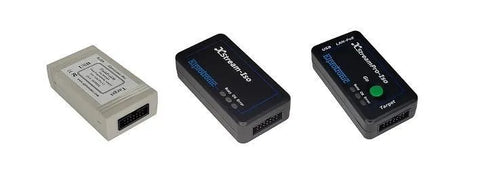The flash memory of a microcontroller may be rewritten with the use of a device called a flash programmer. When we talk about a "program," we're referring to a piece of code that has been created, compiled, and sent to the microcontroller so that it may be run.

Why Do We Want to Program the Flash Memory of Microcontrollers?
Flash programmers are used to programming a wide variety of flash devices available in many different packages. Flash memory is a non-volatile memory type that can be electrically erased and reprogrammed repeatedly.
The three common microcontroller storage forms are read-only memory (ROM), random-access memory (RAM), and erasable programmable.
Flash is a non-volatile kind of memory, meaning that the data stored in it will be accessible even if the microcontroller is powered off. RAM, or random access memory, temporarily stores data while a program is being actively performed. Like Flash, EEPROM can't be accidentally erased. Flash memory is the more popular and crucial of the two nonvolatile memories because it is faster and more plentiful.
Microcontrollers need a program to be stored in memory before they can run it. The data (the program) from memory is sent to the CPU for processing after being stored there. While a program is being performed, the RAM stores runtime data, such as the results of any mathematical computations or state changes.
In order for the microcontroller to boot the program, the Flash memory must be programmed. The microcontroller will not run the code until that time comes. The benefit of flash programming is that after the microcontroller has been properly programmed, the program is safe even if power is suddenly cut off to the microcontroller, whether purposely or accidentally.
Therefore, the program would still be usable if we restored its power. To understand how a computer operates, consider the following. It doesn't matter how many times we power it down and back up, the operating system will always load successfully. Since the operating system is stored in nonvolatile memory, it will always be accessible to the processor.
So now you should know why, in order to program a microcontroller, we need a flash programmer. We need a way to program the microcontroller's flash memory so that it can store the program that we want the microcontroller to execute.
A flash programmer is a pretty specialized type of hardware. It normally is specific to a family of microcontrollers because they have different hardware architectures. Thus, if we're dealing with FM or PSoC microcontrollers, we must have a specialized flash programmer who deals with them. If we're dealing with iMotion MCUs, we need a flash programmer that can program both the ARM and MCE cores. And depending on how much the architectures of microcontrollers differ within a brand of microcontrollers, we may need different flash programming procedures for each type of core. You can always do some research to see what type of flash programmer is required for your specific microcontroller.
The flash programmers for Infineon/Cypress Semiconductor's FM, and PSoC MCUs offer a wide variety of features, not only do they support JTAG, and SWD communication, but they can also be used with Up to 64 programmers, which can be connected over USB to one PC.
It has an easy-to-use GUI that allows the user to easily configure all necessary options (GUI on Windows only) with an extensive memory option that includes selecting erase, program, and verify. Select flash data can be retained across programming sequences.
You can monitor current consumption and voltage in real-time, drag and select an area of interest (app test duration) with an estimated yearly battery load in Ampere hours.
The CMSIS-DAP 2.0 ARM Debugger Power supply from adapter available, up to 200mA, is available on XStream-Iso and XStreamPro-Iso ARM programmers (FP/GP-ARM or X). USB-FPA (gray adapter) is not supported and supports any CMSIS-DAP 2.0 capable IDE. It is tested on the latest IAR EWARM, and Keil uVision IDEs.
As for standalone programming, it includes an auto program with a green GO button, which can be configured to Auto Program when a defined voltage range is detected on Vcc-Out (pin 2) or Vcc-Sense (pin 4). Pre-select which image will be used for programming and serialization quota support.
As you can see, the flash programmers for Infineon/Cypress Semiconductor's FM, and PSoC MCUs are a comprehensive solution for your needs. For more information or if you’re ready for your own Infineon/Cypress Semiconductor's FM, and PSoC MCUs, visit the link below.
Buy the Infineon/Cypress Semiconductor's FM, and PSoC MCUs
For all your flash programming needs, visit Elprotronic Inc… We offer flash programming solutions for various embedded MCUs. We deliver quality and reliable production programmers that provide top performance and software flexibility for low- and high-volume production.
